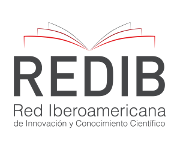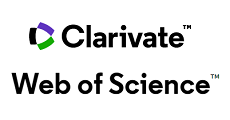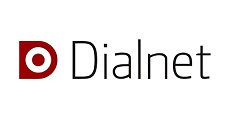Efectos del tratamiento térmico en la fractura de aceros
DOI:
https://doi.org/10.15446/ing.investig.n27.20775Keywords:
Tratamiento térmico, Deformación plástica, Mecánica de fractura, Fractura de aceros (es)Heat treatment, Plastic deformation, Fracture mechanics, Fracture of steels (en)
Downloads
No obstante de los avances logrados en otros tipos de aleaciones, los aceros se siguen utilizando en forma extensiva en la construcción de elementos estructurales, porque con una adecuada selección y tratamiento técnico, los aceros permiten obtener una conveniente combinación de propiedades mecánicas ante unas exigencias específicas de servicio. La fractura en elementos de máquinas frecuentemente se encuentra asociada a una discontinuidad, la cual provoca una concentración de esfuerzo, lo que puede originar sitios de iniciación de una falla por fractura. La carga límite de fractura es afectada por parámetros geométricos, naturaleza y tipo de carga y propiedades mecánicas del material. La mayoría de fallas por fractura de elementos de máquinas son fallas por fatiga; por lo general una fractura por fatiga tiene lugar por una progresiva generación y crecimiento de grietas hasta obtenerse una condición crítica de fractura súbita de la sección residual resistente. Frecuentemente en una fractura por fatiga se observan marcas de playa, las cuales son evidencias de la posición del frente de grietas antes que se alcance la condición de fractura súbita final. En este trabajo se muestra como el tratamiento térmico de temple y revenido de los aceros afecta el esfuerzo límite de falla por fractura para carga de tracción estática y carga de fatiga uniaxial con la presencia de una entalla severa. También se estudia el efecto del tratamiento térmico en la tenacidad de fractura, propiedad que cuantifica la resistencia al crecimiento súbito de una grieta bajo carga estática.
References
J.A. Collins, Failure of Materials in Mechanical Design, John Wiley, 1981.
Boresi/Seely, Advanced Mechanics of Materials, John Wiley, 3 edición, 1978.
R.C. Juvinall; Stress, Strain and Strength, McGraw-Hill, 1967.
R.W. Hertzberg, Deformation and Fracture Mechanics of Engineering Materials, John Wiley, 1976.
G.E. Dieter, Mechanical Metallurgy, McGraw-Hill, 3 edición, 1986.
Oscar J, Horger, Metals Engineering Design, ASME Handbook, 2 Edición, 1965.
Metals Handbook, Vol. 11 Failure Analysis and Prevention, ASM, 8 Edición, 1986.
ASTM E-466-82, Standard Practice for conducting constant Amplitude Axial Fatigue test of Metallic Materials, ASTM, 1982.
Grossman/Bain, Principios de tratamiento térmico, Editorial Blume, 1964,
A.F, Madayag, Metal Fatigue; theory and design, Ed. John Wiley, 1969.
How to Cite
APA
ACM
ACS
ABNT
Chicago
Harvard
IEEE
MLA
Turabian
Vancouver
Download Citation
CrossRef Cited-by
Dimensions
PlumX
Article abstract page views
Downloads
License
Copyright (c) 1992 Héctor Hernández A.

This work is licensed under a Creative Commons Attribution 4.0 International License.
The authors or holders of the copyright for each article hereby confer exclusive, limited and free authorization on the Universidad Nacional de Colombia's journal Ingeniería e Investigación concerning the aforementioned article which, once it has been evaluated and approved, will be submitted for publication, in line with the following items:
1. The version which has been corrected according to the evaluators' suggestions will be remitted and it will be made clear whether the aforementioned article is an unedited document regarding which the rights to be authorized are held and total responsibility will be assumed by the authors for the content of the work being submitted to Ingeniería e Investigación, the Universidad Nacional de Colombia and third-parties;
2. The authorization conferred on the journal will come into force from the date on which it is included in the respective volume and issue of Ingeniería e Investigación in the Open Journal Systems and on the journal's main page (https://revistas.unal.edu.co/index.php/ingeinv), as well as in different databases and indices in which the publication is indexed;
3. The authors authorize the Universidad Nacional de Colombia's journal Ingeniería e Investigación to publish the document in whatever required format (printed, digital, electronic or whatsoever known or yet to be discovered form) and authorize Ingeniería e Investigación to include the work in any indices and/or search engines deemed necessary for promoting its diffusion;
4. The authors accept that such authorization is given free of charge and they, therefore, waive any right to receive remuneration from the publication, distribution, public communication and any use whatsoever referred to in the terms of this authorization.




























